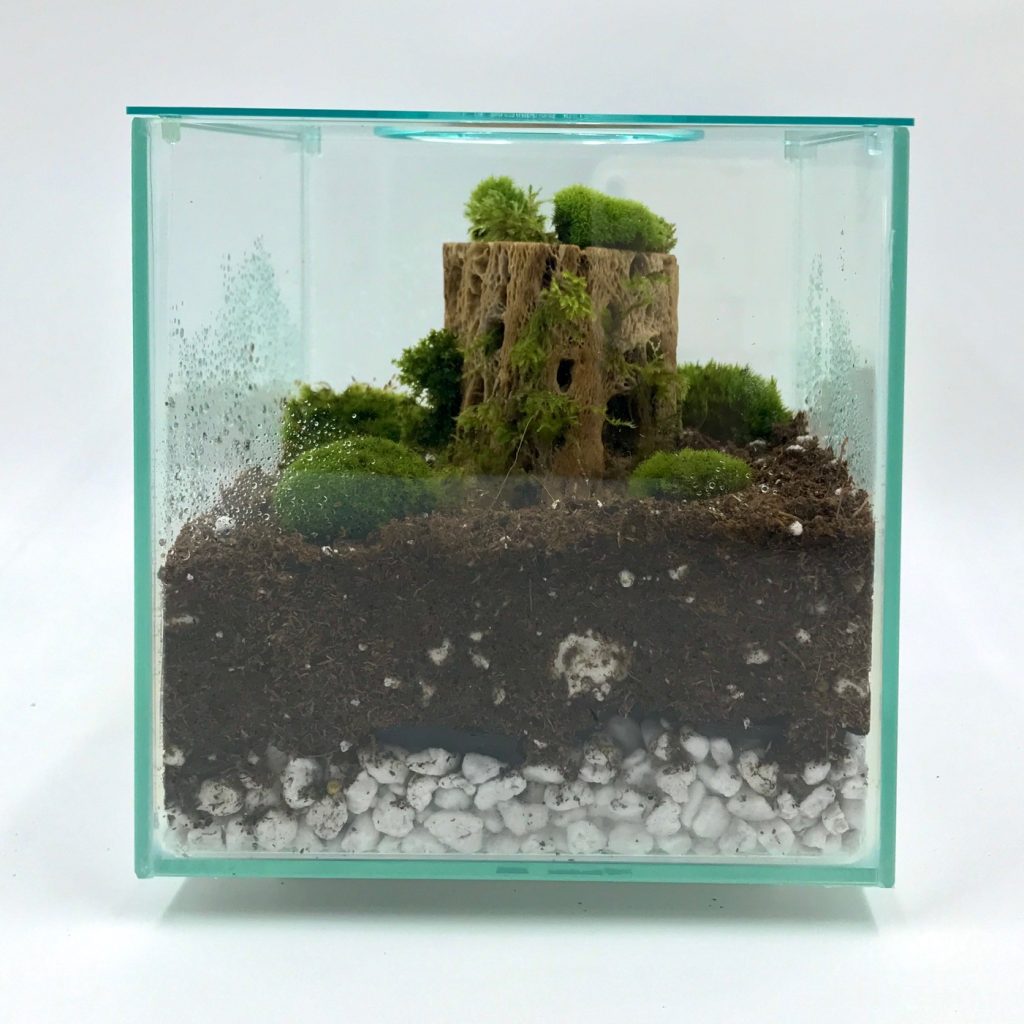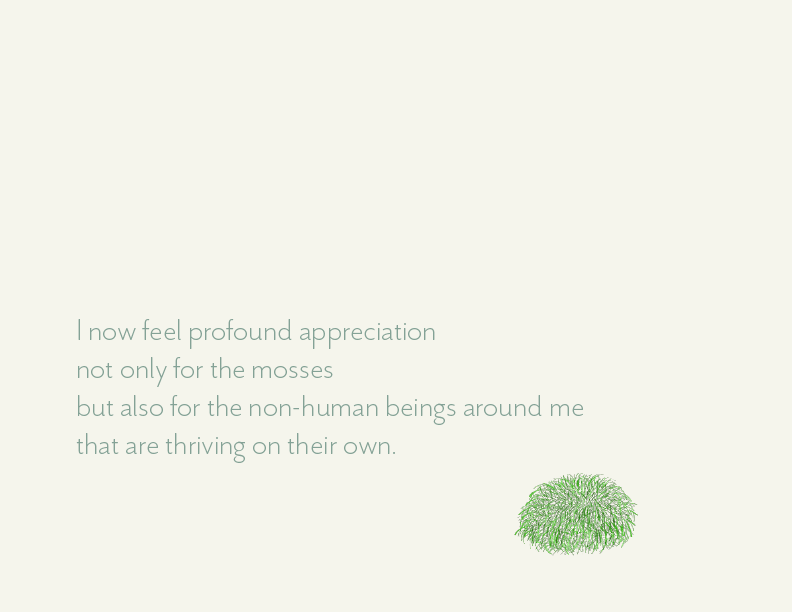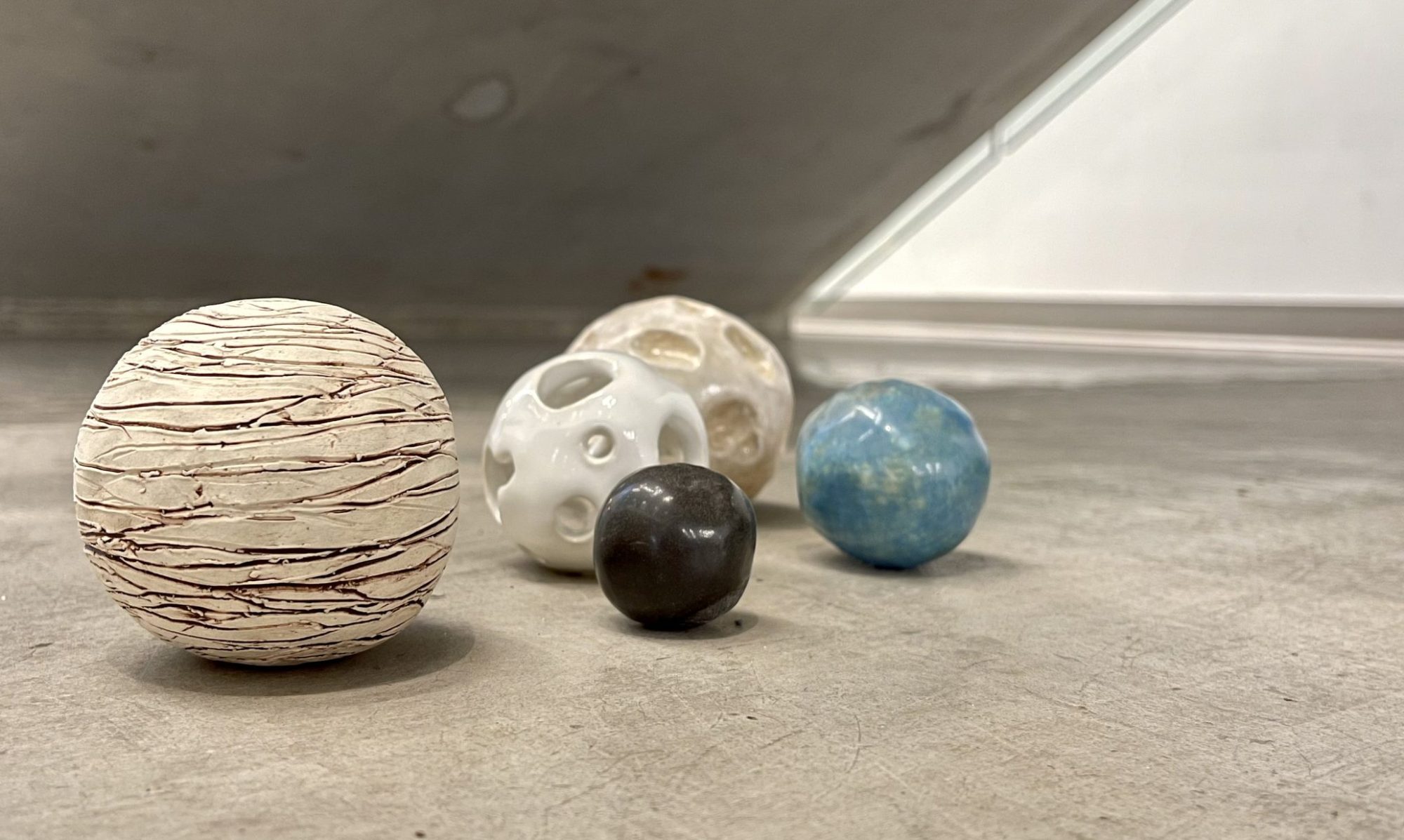Spring 2022
about mosses.
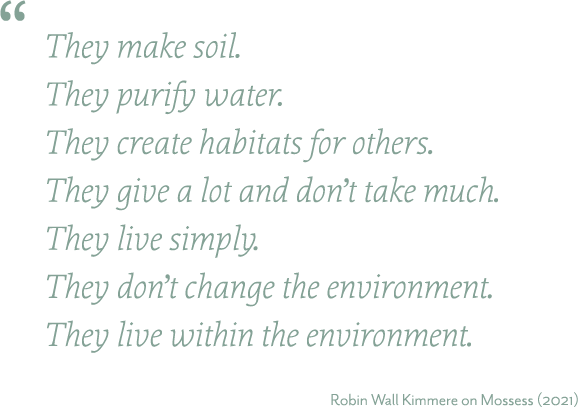
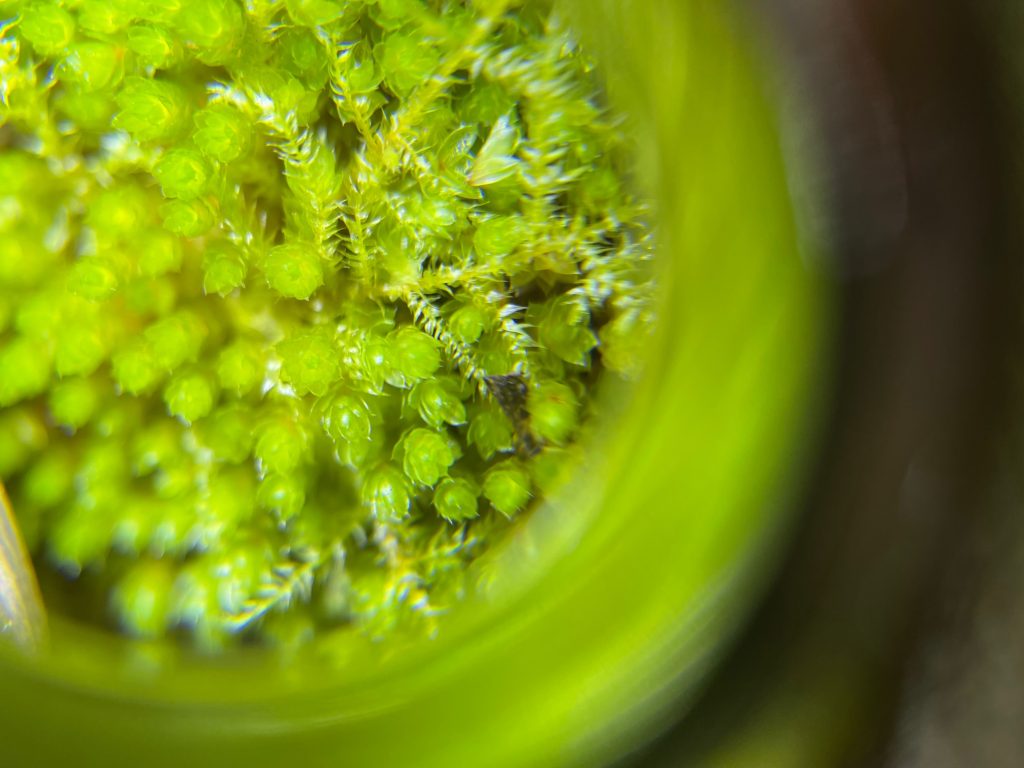
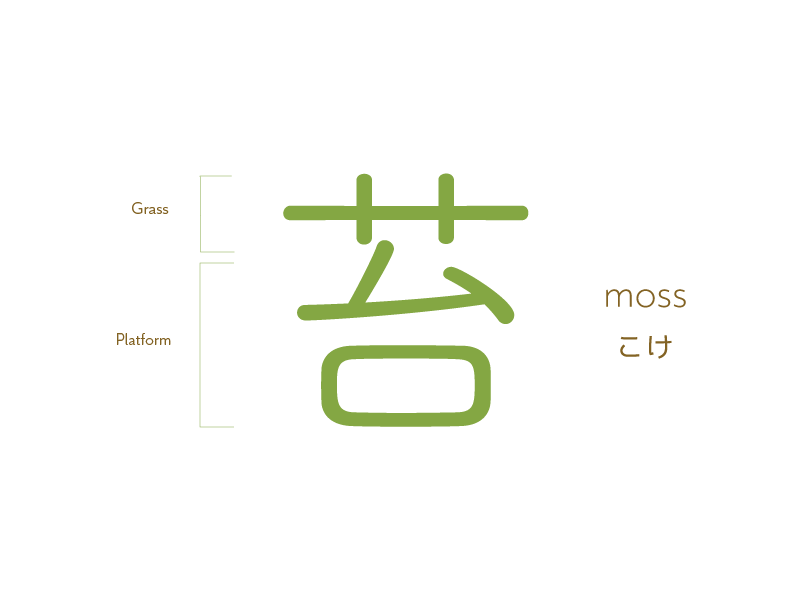
In Japanese culture, “moss” can mean “eternal time”, which is an expression born from the fact that it takes a long time for mosses to grow. In the Middle Ages, due to the influence of Zen and the tea ceremony, the aesthetic sense of Japanese culture known as “Wabi-Sabi” was born; “Wabi-Sabi” finds beauty in sparseness and tranquillity rather than a gorgeous luxury. The plant that embodies this is moss. The combination of mosses growing quietly without blooming, and still maintaining clear freshness with its vibrant or deep green colours gives the feeling of Wabi-Sabi. The existence of mosses have become an indispensable part of the Japanese garden (Y. Oishi, 2020).
The Japanese National anthem includes moss as a symbol of eternity showing perfectly how intertwined mosses are with the Japanese psyche (H. Akiyama)
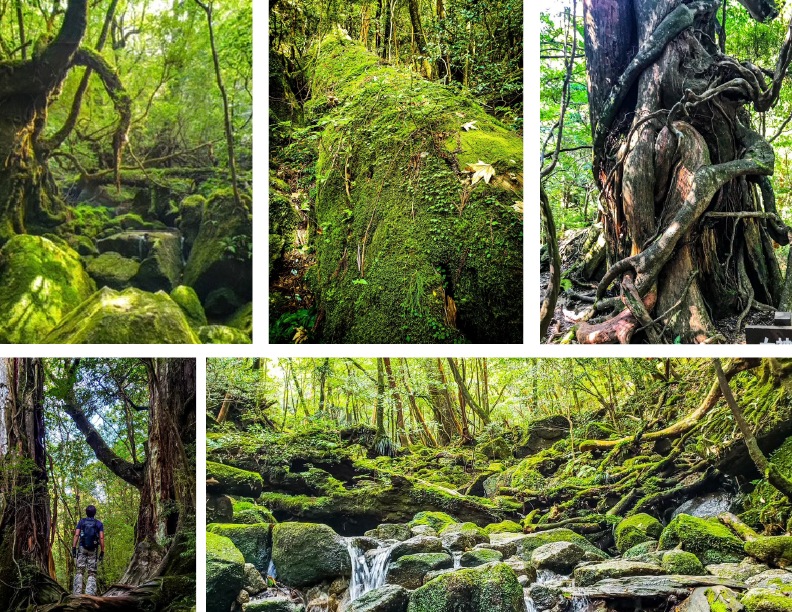
There are many well-known beautiful old moss gardens in Japan, but one place that I am hoping someday to go to is Yakushima Island. It is registered as a World Natural Heritage Site. It is said that about 1,600 species of mosses grow in Japan, and about 600 species of them exist on the island of Yakushima. Yakushima is truly a treasure trove of mosses. The reason why such a variety of mosses grow here is the unique environment of Yakushima. High mountains such as Mt. Miyanoura (elevation 1,936m) rise in the center of Yakushima, and when moist air warmed by the warm current of the ocean surrounding the island hits the mountains, clouds are created, which then brings a large amount of rain (Japan National Tourism Organization).
Mosses Around Me
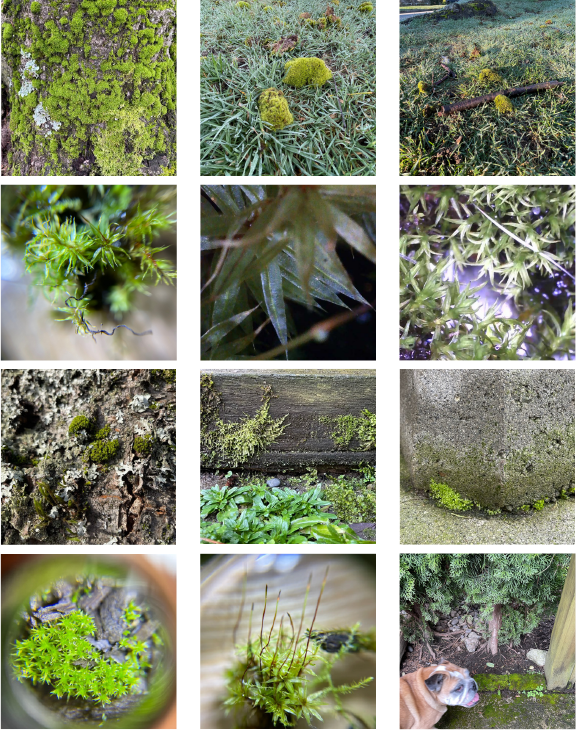
Mosses for Other Beings
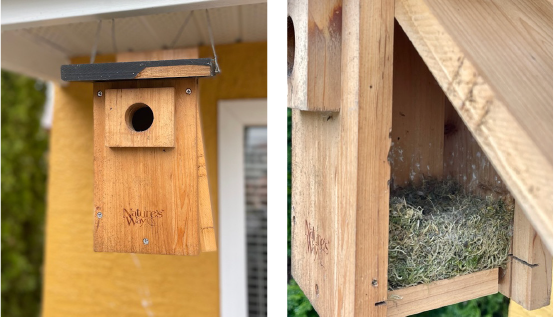
Birds
Chickadee birds started to nest in the wooden birdhouse on our back porch last year. After several weeks, I started to hear the chirping of baby birds from the house. After another several weeks, the birdhouse became quiet. When I opened the birdhouse, there was an empty nest made of moss. I remembered seeing a bird carrying about an inch and a half of moss-a tiny shred- and marvelled as I realized the parents must have made several thousand trips to make this nest for their family! I read that chickadees do not return to old nests and so I decided to clean the house out this year, in hopes that it would again create a safe place for a new family. When I took out the old nest, I carefully took out the nest and examined it; as far as I can tell, I could only see mosses as material for the nest. The nest was dry but very soft to the touch. It seemed like a perfect place for tiny eggs and little baby birds to be born and raised.
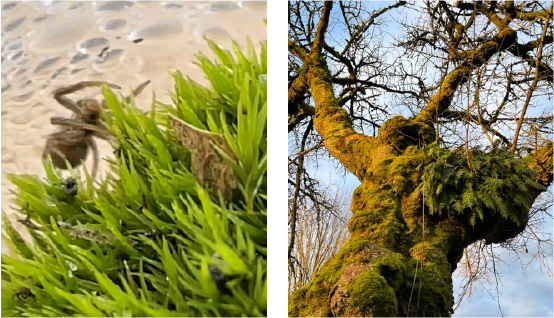
Insects
Mosses make perfect places for little critters to hide. While I was examining the mosses in the mossarium I built, I was surprised to see a huge spider appear. Taking a closer look with a digital magnifier, it seemed like the spider was carefully and intently examining every tiny blade of what looked like a lawn but was actually magnified moss.
Plants
Mosses provide a place for plant seeds to grow. One study proved a symbiotic relationship across three organisms: a plant (Mitella) is helped by its pollinator (small fly), and the pollinators’ larvae are helped by mosses as a place to live and for its food source (Okuyama et al., 2018).
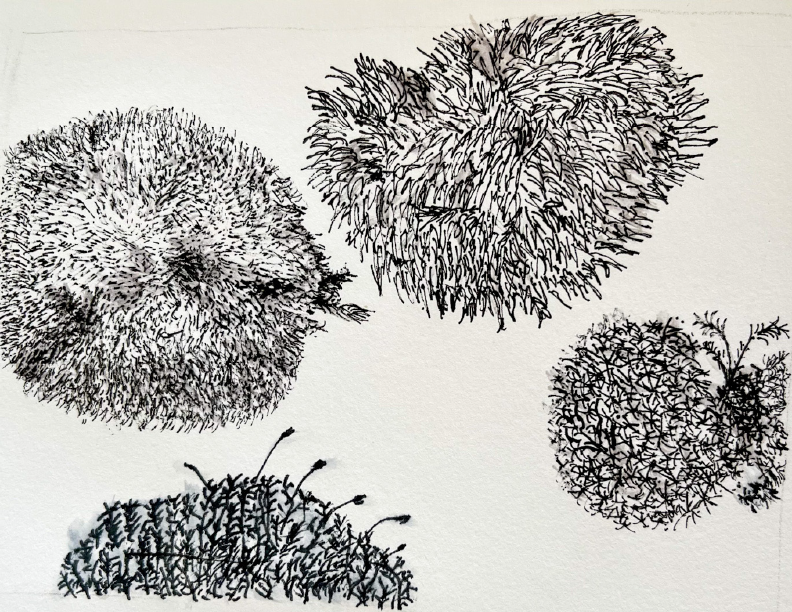
Struggle with the names
I struggled with the exact scientific names of the mosses that I collected. So many of them looked similar! I decided to ask a moss expert in Japan, Hisako Fujii. She is a well-published author, who writes about mosses. I was able to exchange several communications via DM with her! She told me that it is good to record the size and environment that mosses are growing in, etc., to help determine their names. She gave me her guesses for which group of mosses the mosses I had would be in. I was grateful that she was so friendly and generous with her time.
However, with thousands of species of mosses, I could not 100% positively distinguish names for the mosses that I gathered. This was frustrating and I felt I was stuck. Eventually, I knew I had to move on but did not feel good about not being able to call each of them by their scientific names… however, after receiving kind advice and encouragement from some of my professors, I was more easily able to move on. Thank you!

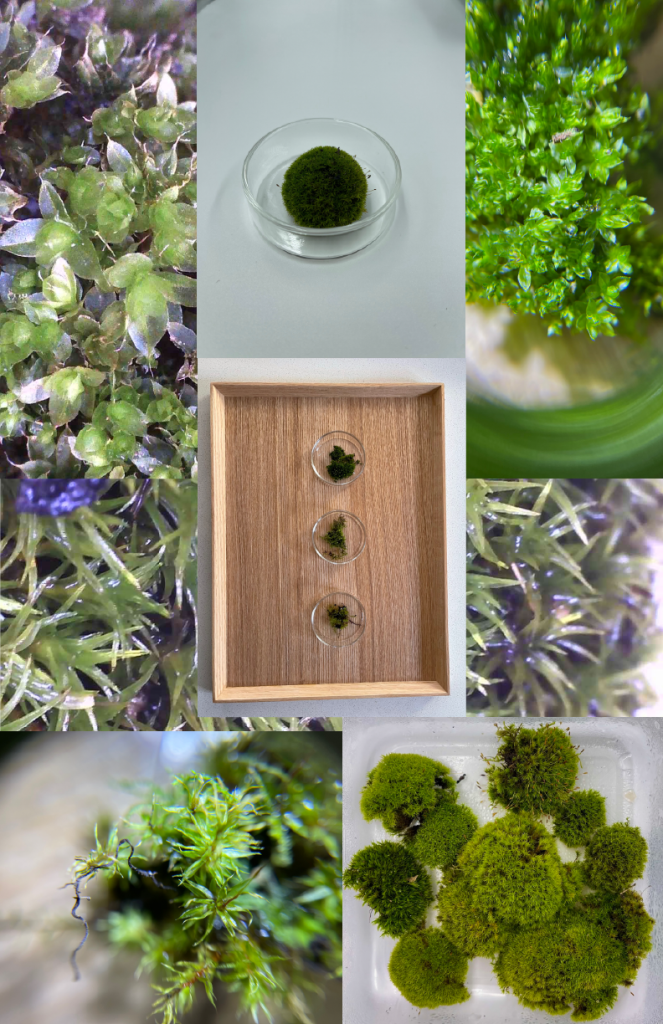
Making Mossarium
From my research, I knew it is environmentally unethical to transplant mosses and therefore, I knew I wanted to gather mosses from around my neighbourhood (instead of ordering them from a different place). On my neighbourhood walks, I started viewing where mosses were growing, noticing different types of moss, and how they grew on different surfaces. I wanted to see how mosses grew and wanted to make something I could observe more often, so I decided to make a mossarium.
I built my mossarium and placed it in a position to get natural light. I covered it- thinking that it could survive with its own ecosystem (I read that mosses could build their own ecosystem) and I added LED light to help on cloudy days. I sprayed water on its surface several times per week; simultaneously, I placed some of the mosses I had gathered in a few places around my backyard so I could observe and compare the mosses I gathered and placed outdoors versus what I gathered and placed in the mossarium I built.
I observed and interacted with my mosses indoors and outdoors, hoping that I could see them grow and flourish. This did not occur the way I anticipated and I started feeling bad for them. My appreciation was growing for them and because I wanted to help them be happy; it almost felt like I was watching over my children as I checked on them and fussed over them numerous times per day.
Although the mosses in my mossarium continued to grow smaller, I feel that I learned from this experience and now have a profound appreciation not only for the mosses but the non-human beings that are around me that are thriving on their own.
